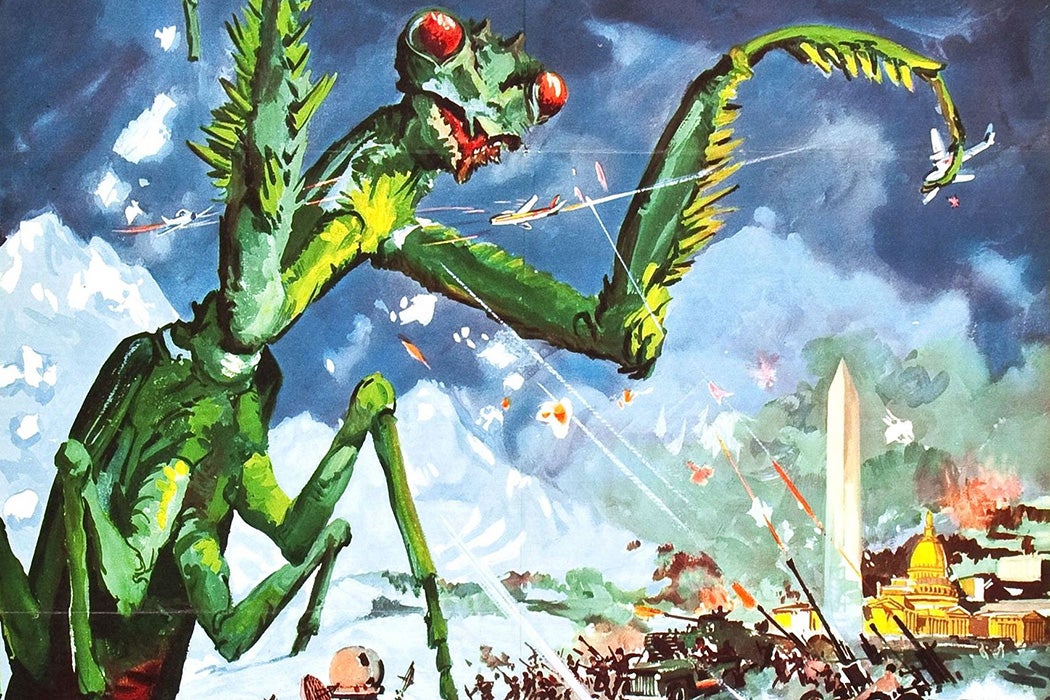What do you do when faced with a cockroach? Run in fear, stamp it underfoot, or poison and suffocate it with insecticide? Now, what would you do if that same cockroach were twelve feet tall, towering above you with clacking mandibles? Moviegoers in the 1950s were invited to imagine such giant insects threatening them and life as they knew it. It was the decade of the Big Bug films, part of a fertile era for science fiction that got underway in the 1940s. On the literary side, John W. Cambell’s Astounding Science Fiction magazine enjoyed massive success, launching the careers of authors Isaac Asimov and Robert Heinlein, whose influence still casts shadows on modern science fiction. Cinematically, the genre claimed its stake with The Thing from Another World, The War of the Worlds, and, in 1954, Them!
Them! is about giant ants, born in the desert of New Mexico from “a fantastic mutation probably caused by lingering radiation from the first atomic bomb” (as the movie’s scientist explains), terrorizing humanity. Part horror, part whodunit, the film follows the police, the FBI, and a pair of entomologists, more specifically myrmecologists, who team up to stop the ants from killing everyone in Los Angeles.
“Kill one, and two take its place,” warned the movie poster.
Them! was Warner Bros,’s highest grossing release that year, and its success spawned more productions featuring outsized creepy crawlies. Giant locusts (Beginning of the End), moth-like creatures (Mothra), spiders (Mesa of Lost Women, Tarantula with an uncredited cameo by Clint Eastwood, Earth vs. the Spider), scorpions (The Black Scorpion), and wasps (Monster from Green Hell) crawled across movie screens and terrorized audiences throughout the decade and into the early 1960s. Some films, such as The Fly and The Wasp Woman, even experimented with human-insect hybrid villains.
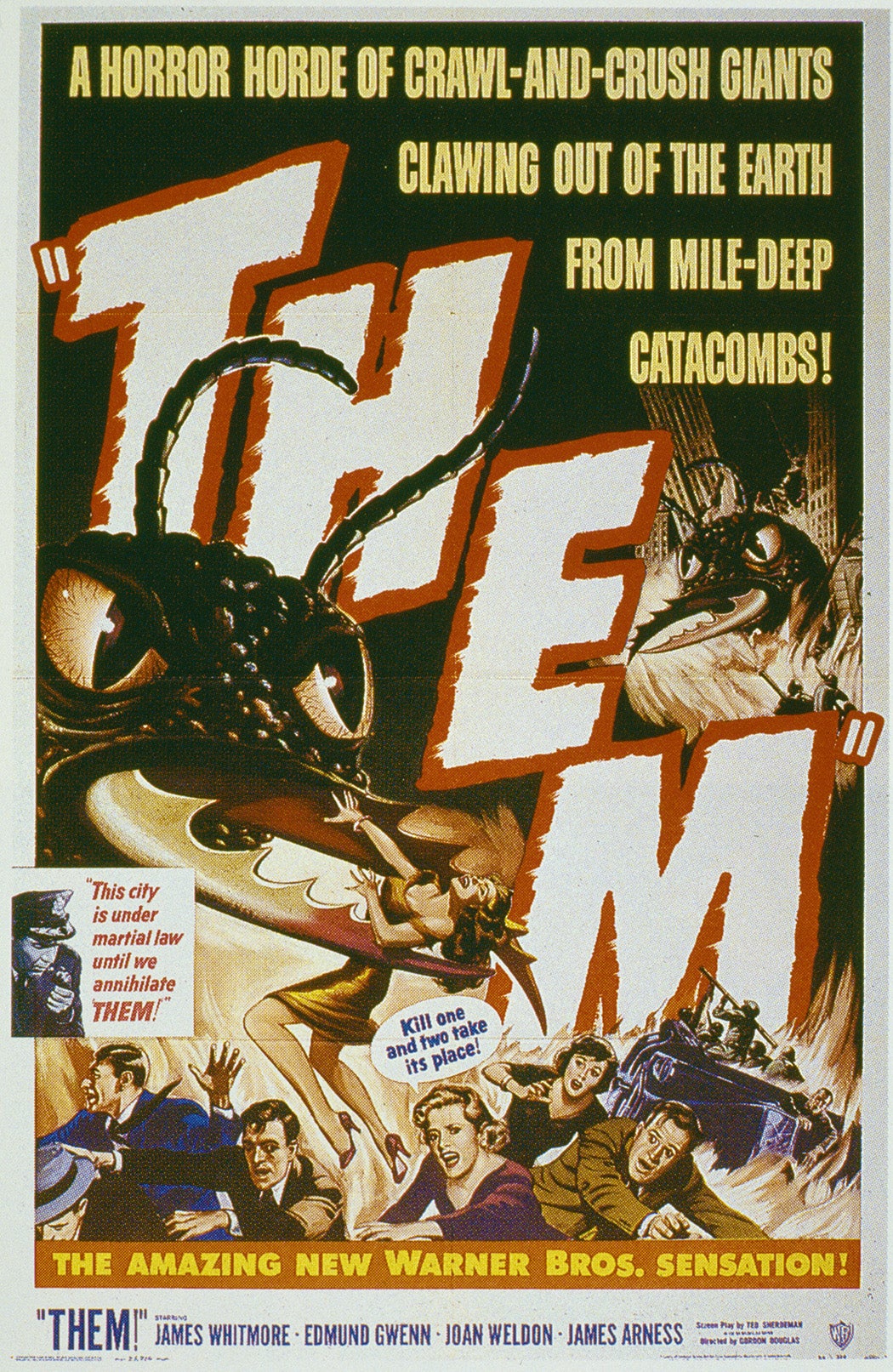
Today the genre known as the Big Bug films occupies cult status, the films’ originality and weirdness sufficient to warrant investigation. What makes them more curious is that though dynamic, they had a finite life span. The Big Bug movies of the 1960s were low-budget, poorly written affairs; audiences and critics alike ignored them.
The original and captivating effervescence of filmic arthropods drew its strength from the events and aftermath of World War II. The previous decade had seen nuclear bombs and the deadly effects of atomic radiation. In 1952, the United States vaporized an entire island in the Pacific’s Enewetak Atoll with a hydrogen bomb. With a boost from Rosalind Franklin’s research, Francis Crick and James Watson ushered in the era of modern genetics in 1953 with discoveries about the structure of DNA; a decade later, they won a Nobel Prize for their efforts. And just as scholars were beginning to understand the intricacies of our chemistry, both scientists and politicians began to look beyond it, to space exploration and the race to get there.
Weekly Newsletter
Science fiction extended the imagination to this realm even before much of it was achieved in reality. While literary science fiction of the 1950s gave readers a variety of scenarios to envision, cinematic science fiction was preoccupied with a narrower range of stories. It concerned itself onscreen with the “imagination of disaster” as Susan Sontag put it in her essay of the same name.
“The science fiction film,” Sontag writes, “is concerned with the aesthetics of destruction, with the peculiar beauties to be found in wreaking havoc, making a mess. And it is in the imagery of destruction that the core of a good science fiction film lies.”
The standard Big Bug film follows such criteria: a scientific experiment goes awry, resulting in the creation of monstrous insects or arachnids. Unleashed upon the world, they threaten human existence. A hero, usually a government-employed scientist, must defeat the monster and save the day.
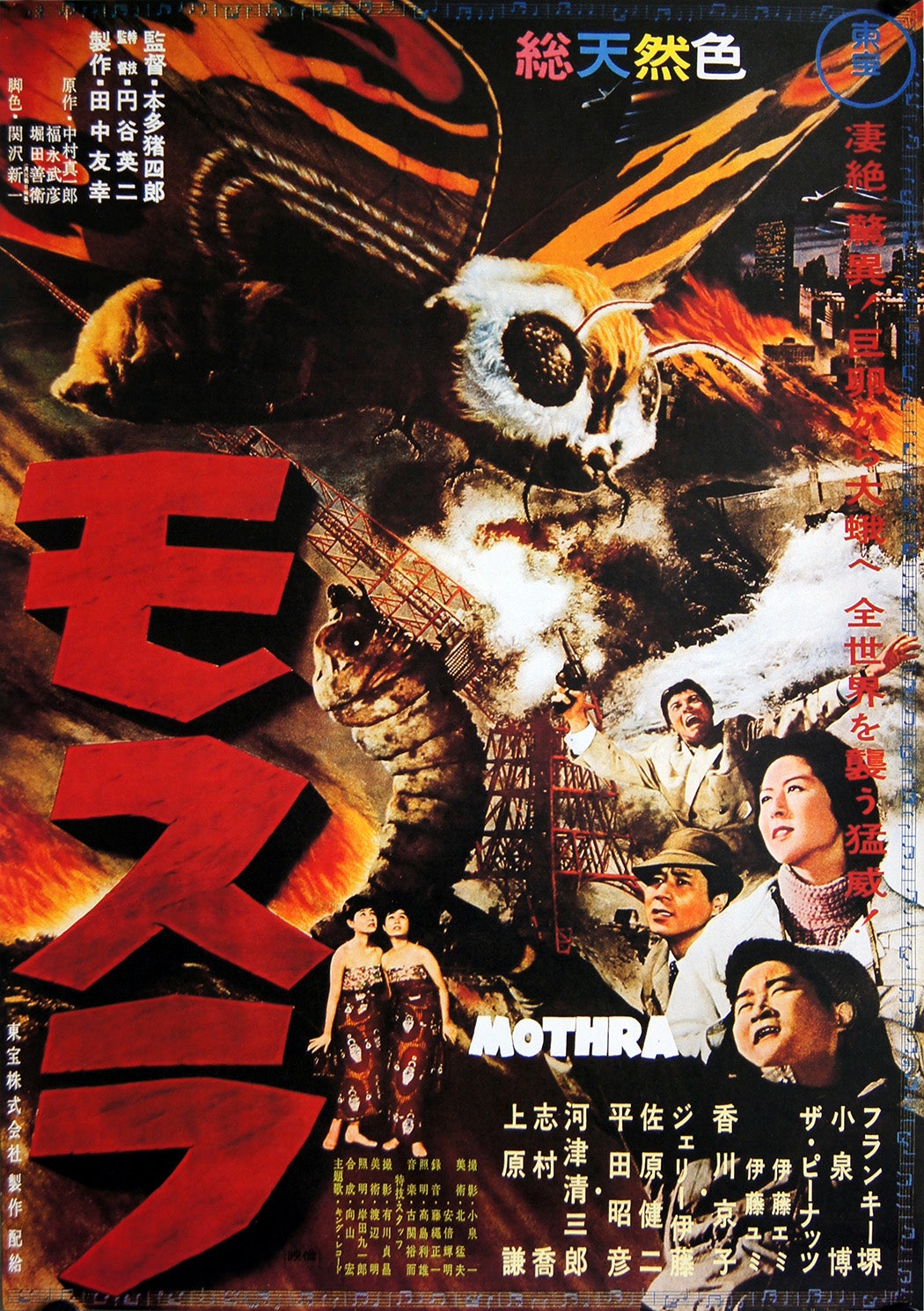
For many critics, movie monsters—from giant insects to Godzilla—reflected American society’s anxieties about nuclear warfare. Like the ants in Them!, these creatures were often caused by radiation.
Sontag argues that these movies “bear witness to this [nuclear] trauma, and in a way, attempt to exorcise it.” That’s no stretch; consider the words of the entomologist at the end of Them! who cautions, “We may have entered the atomic age. We opened a door into a new world. What we eventually find in that new world, nobody can predict.”
But there were other analyses of what the Big Bug movies meant. For scholars such as Michael Rogin, hordes of giant insects represented communism. The organized collectivist ants making their way underground were the threat hiding among unsuspecting Americans.
Still, others found these movies critical of science while also exalting it. In Seeing Is Believing: How Hollywood Taught Us to Stop Worrying and Love the Fifties, Peter Biskind notes that though science often causes problems, it solves them too, hand-in-hand with the state. Unlike the single champion (usually male) in a superhero film, the big bug films show a sort of scientific-military-state complex that ultimately saves humanity—or, at the very least, a medium-sized city—from destruction.
Yet other readings take a more Freudian view. The giant insects represent the primitive id: suppressed sexual desire and aggression.
“Magnification of power or size—e.g., giant insects (and other exaggerated animalcules)—is another mode of symbol formation,” writes professor of philosophy Noël Carroll. “Often magnification takes a particular phobia as its subject and, in general, much of this imagery seems comprehensible in terms of Freud’s observation that ‘the majority of phobias…are traceable to such a fear on the ego’s part of the demands of the libido.’”
Scholar Bonnie Noonan looked at the movies through the lens of gender. She suggests the movies harbor anxieties about female domination, and more realistically, the independent working woman.
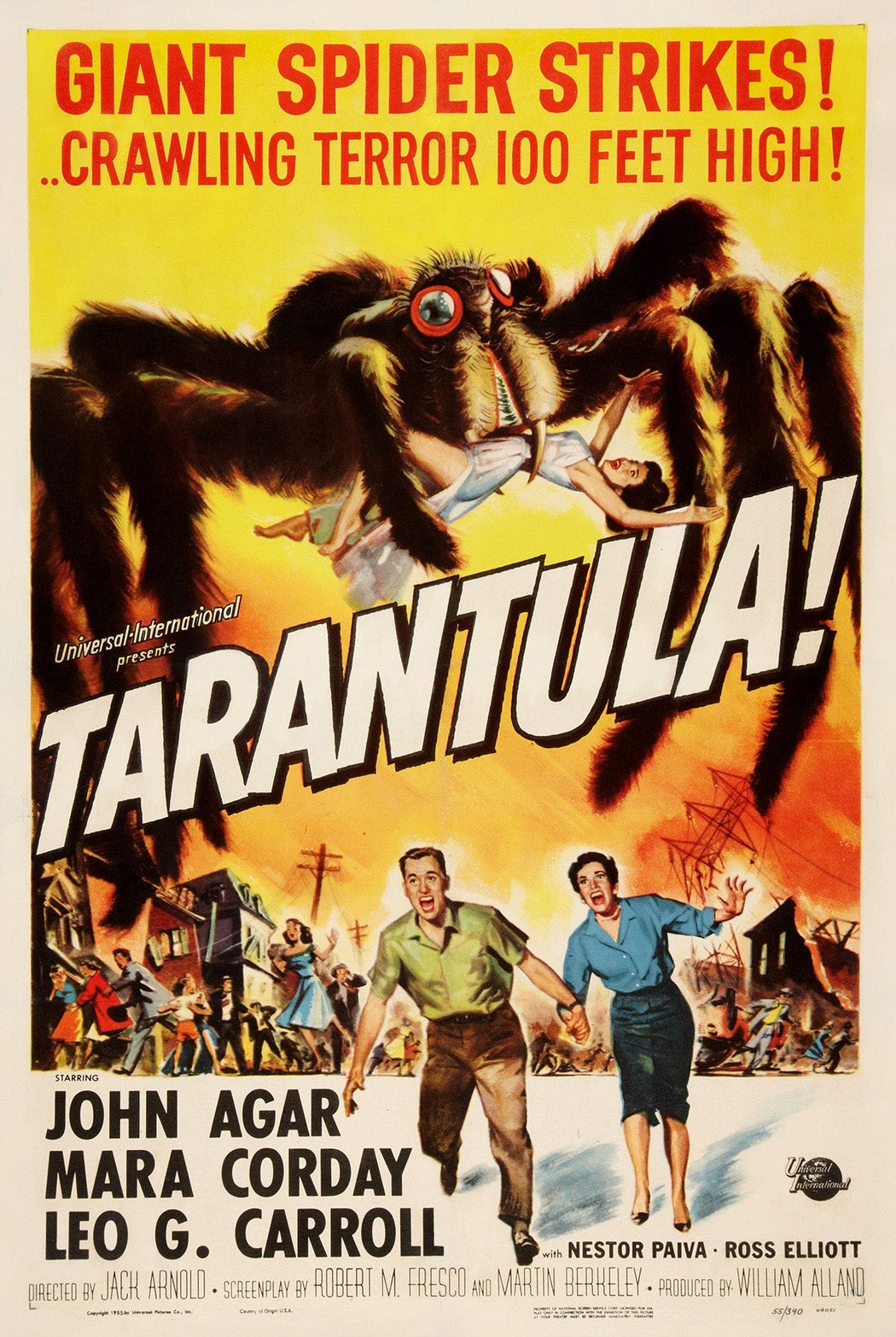
“The gender characteristics of the ants, tarantula, and praying mantis in Them!, Tarantula, and The Deadly Mantis correspond to the threat and instability embodied in attempts to represent women scientists in post-World War II America,” she writes.
Or perhaps it is the bugs’ size that terrifies us. While most scholars look at the giant insects as a metaphor or symbol, some suggest we take a more literal approach to the topic. Historian William M. Tsutsui, for instance, posits that the insects simply represent insects.
Indeed, insects have always disgusted humans. Etymologically, the origin of the word “bug” comes from the Middle English bugge, meaning “hobgoblin,” an association that comes courtesy of the wretched bed bug.
Bugs are present at sites of death and decay. They carry disease. They defy physical barriers that stop humans and enter our most holy spaces: our homes. Even when the bugs are giant, they still behave like insects, hiding underground, invading cities, and spreading fear.
Literature and movies instill this disgust deeper still. In late nineteenth-century and early twentieth-century science fiction, or proto-science fiction as some scholars call it, the insect featured in narratives of utopia, society, and disgust. Giant ants featured in the early stories of H. G. Wells and André Laurie, long before the onset of Cold War anxieties. But the Big Bug movies were informed by a different conflict in America: the war on bugs.
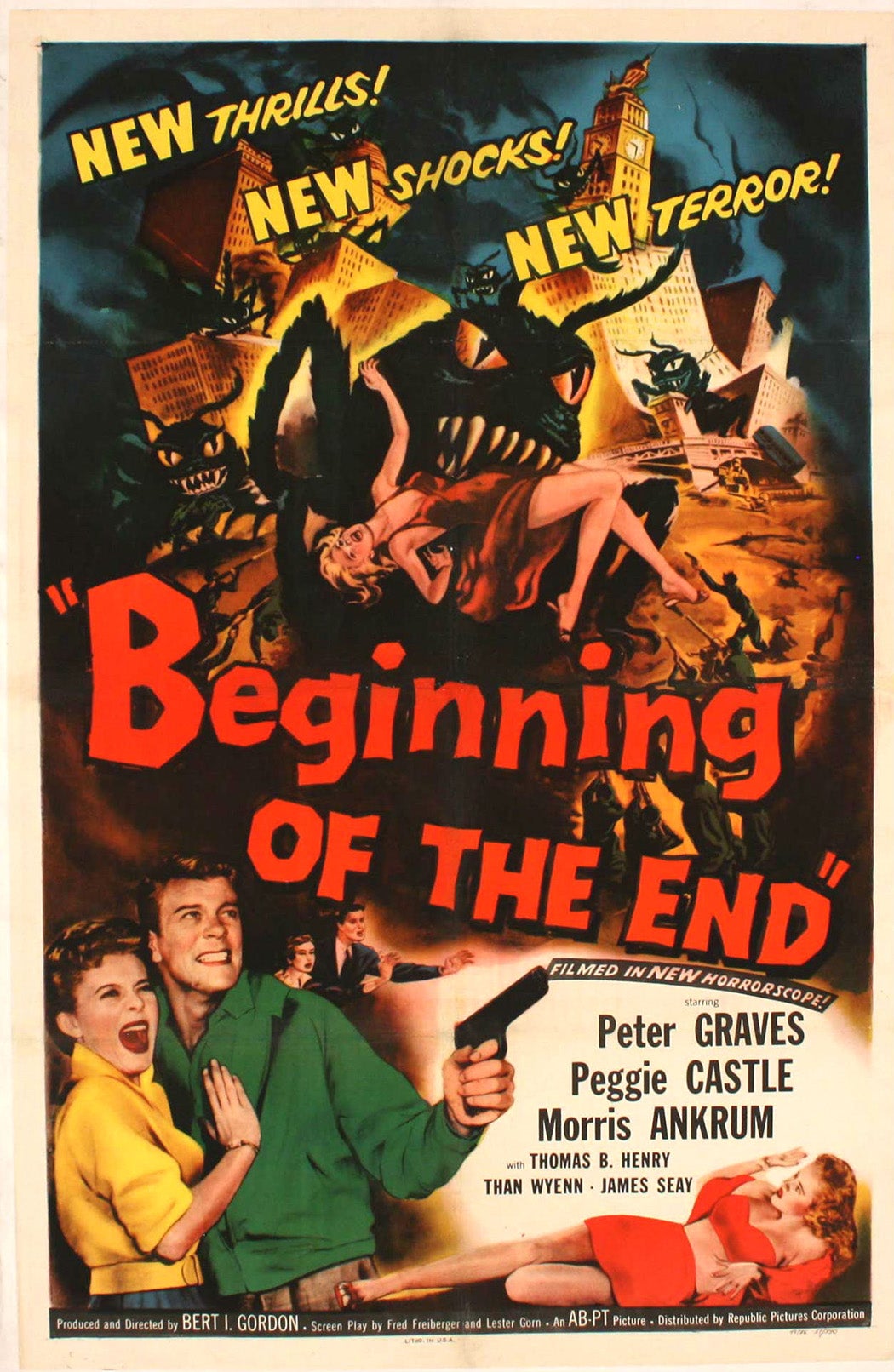
The world wars turned the insect from a nuisance to a mortal threat. Soldiers were incapacitated or died of insect-borne diseases such as malaria. An entomologist with the US Army Medical Service Corps, Colonel Emory C. Cushing, noted that soldiers
fought for days with fevers and didn’t know it…. Malaria, dengue fever, dysentery, and in a few cases typhus, hit man after man. There was hardly a soldier amongst the thousands who went into the jungle who did not come down with some kind of fever at least once.
The US military recruited entomologists to study potentially dangerous insects and how to kill them. Innovation in insecticides reached new heights in the 1950s, along with government enthusiasm to deploy the chemicals. The entomologists in the Big Bug movies are convincingly drawn from real life. Them! and Beginning of the End provide what can be only described as war briefings on the insects. In real life, Cold War language influenced our everyday vocabulary with the introduction of phrases like the “war on insects,” and, in likening DDT to the atomic bomb, the “killer of killers.”
Just as Big Bug movies reflected the anxieties of the war on insects, they later reflected the decline in popularity of insecticides, enthusiasm for which ebbed as instances of its failures grew. Tsutsui notes that “[h]uge government programs in the 1950s to combat persistent pests—the gypsy moth in the northeast and the imported fire ant in the deep south—turned into environmental nightmares and public relations disasters for the agencies involved.” In the Big Bug movies made towards the latter part of the 1950s, insecticides fail to kill the insects. The hero of Earth vs. the Spider proclaims, “DDT? No good. That stuff just stunned them.”
Beyond lackluster performances and the persistence of pests, the insecticides harmed other wildlife. Fears about their impact on the environment entered the mainstream. In Silent Spring from 1962, Rachel Carson warns,
We urgently need an end to these false assurances, to the sugar coating of unpalatable facts. It is the public that is being asked to assume the risks that the insect controllers calculate. The public must decide whether it wishes to continue on the present road, and it can do so only when in full possession of the facts.
Carson’s book ushered in a wave of environmentalism in America; at the same time, Tsutsui points out, the Big Bug films died out. The idea of the government and scientists saving us from giant insects no longer resonated with an audience growing increasingly aware of the larger perils of trying to exterminate them.
Seventy years later, our arsenal for controlling pests has grown and diversified. In the US, insects are now largely a nuisance—not a metaphor for the probability of existential annihilation. Perhaps this is why they only occasionally feature as villains now on our screens. Meanwhile, science fiction’s preoccupations have shifted to other anxieties: climate change, AI, and pandemics. But, in essence, many are still about how technologies of our own making may yet destroy us.
